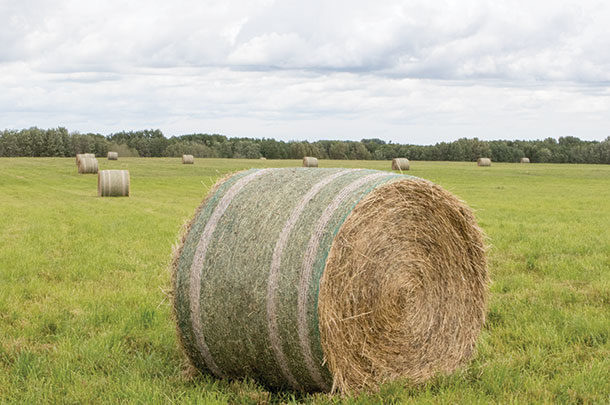Based on a number of research projects, a new practice in forage management is now available, i.e., the production and use of forage high in sugar content obtained through late-afternoon cutting and wide swathing.
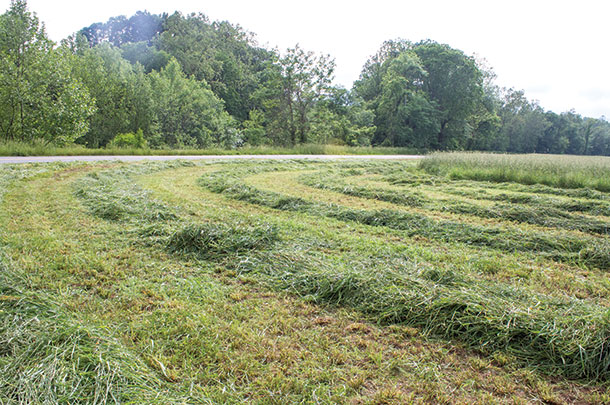
However, it is reasonable to question whether there are real advantages to such a practice. It is this question we are trying to answer through this study by investigating whether the practice can provide additional profits.
What has already been demonstrated
Plants have the ability to accumulate sugars in their aerial parts following photosynthesis. A number of studies have shown this natural phenomenon can be used to improve the performance of cows by producing and using forage that is naturally sweeter. This type of forage can be obtained simply by cutting in the late afternoon rather than the morning.
Experiments conducted with cows in mid- and late lactation, therefore being fed rations rich in forage, have revealed that the use of haylage (50 percent dry matter silage) made of sweet forage increased daily milk production (Table 1).
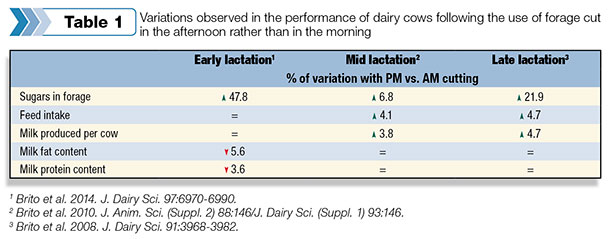
The effects in a similar study conducted with cows in early lactation were not as significant. The difference is explained in part by the increased use of concentrates in early lactation.
However, certain conditions must come together to obtain such results. First, the sugar content of the forage crops must be increased by at least 1 percentage unit. The studies show that to do this, Mother Nature must do her part. A sunny day is necessary for an adequate amount of sugar to accumulate in the plant.
Second, wide swathing is favored because it allows for faster drying, reduced cellular respiration and better conservation of sugars in the forage.
Third, preservation as haylage or hay maintains higher sugar content in the forage fed to cows. In more conventional silage (less than 45 percent dry matter), the sugars are partially used by micro-organisms during fermentation; therefore, less sugar is available for the animal’s rumen microbes.
However, it is likely a high sugar content at the time of ensiling improves the fermentation of this type of silage, but this has yet to be proven.
Impact on a farm’s net income
On the basis of the preceding results, and with confirmation from international findings, we have been able to create a partial budget to assess the impact of the adoption of afternoon cutting on the net earnings of an average farm of 100 cows (20,333 pounds of milk per cow per year and a 418-day calving interval; Table 2).
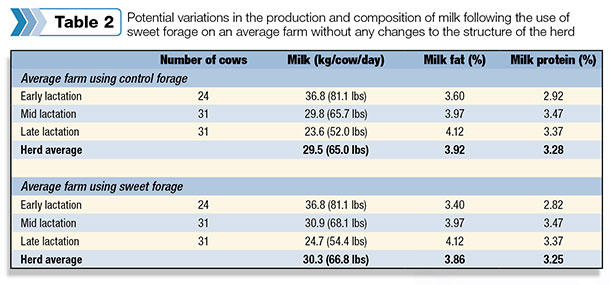
The first step was verifying the impact of variations in milk production and components on bulk tank milk and, at the same time, on the milk pay. Overall, it is evident in Table 2 that the use of sweet forage results in an average increase in milk production in the herd, accompanied by a decrease in the milkfat and protein content.
The increased milk production following the use of sweet forage is associated with an increase in the quantity of total fat delivered, despite a slight decrease in the average milkfat content.
Based on the average milk price of last year, the increase in the quantity of milk delivered, combined with the decrease in its fat content, would result in additional revenue of $6,726 per year (Table 3).
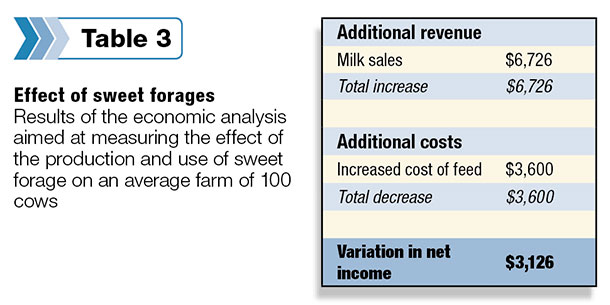
In this scenario, an increase in feed intake, as observed in animal feeding studies, along with an increase in feeding costs must be considered. The increased feeding costs amount to $3,600 per year for an average farm.
Overall, following the production and use of sweet forage on an average farm of 100 cows, additional profits of $3,126 can be expected per year. In addition to the agronomic interest, there is also an economic interest in adopting this practice when the opportunity presents itself.
In conclusion, the production of sweet forage requires no additional investment in the farm but only a change to cutting practices. When the weather permits, cutting in the afternoon rather than the morning is a simple action that, in the end, can result in increased net income for the farm. So if the opportunity presents itself, why not take advantage of it? FG
Laurence Robert and Édith Charbonneau are with Université Laval. Gaëtan Tremblay, Gilles Bélanger and Isabelle Breune are with Agriculture and Agri-Food Canada.
Robert Berthiaume is forage systems expert with Valacta. Email Robert Berthiaume.
PHOTO 1: Round bales, blaed in the afternoon. Photo by Mike Dixon
PHOTO 2: Grass cut in late afternoon and wide swathing. Photo by Lynn Jaynes
